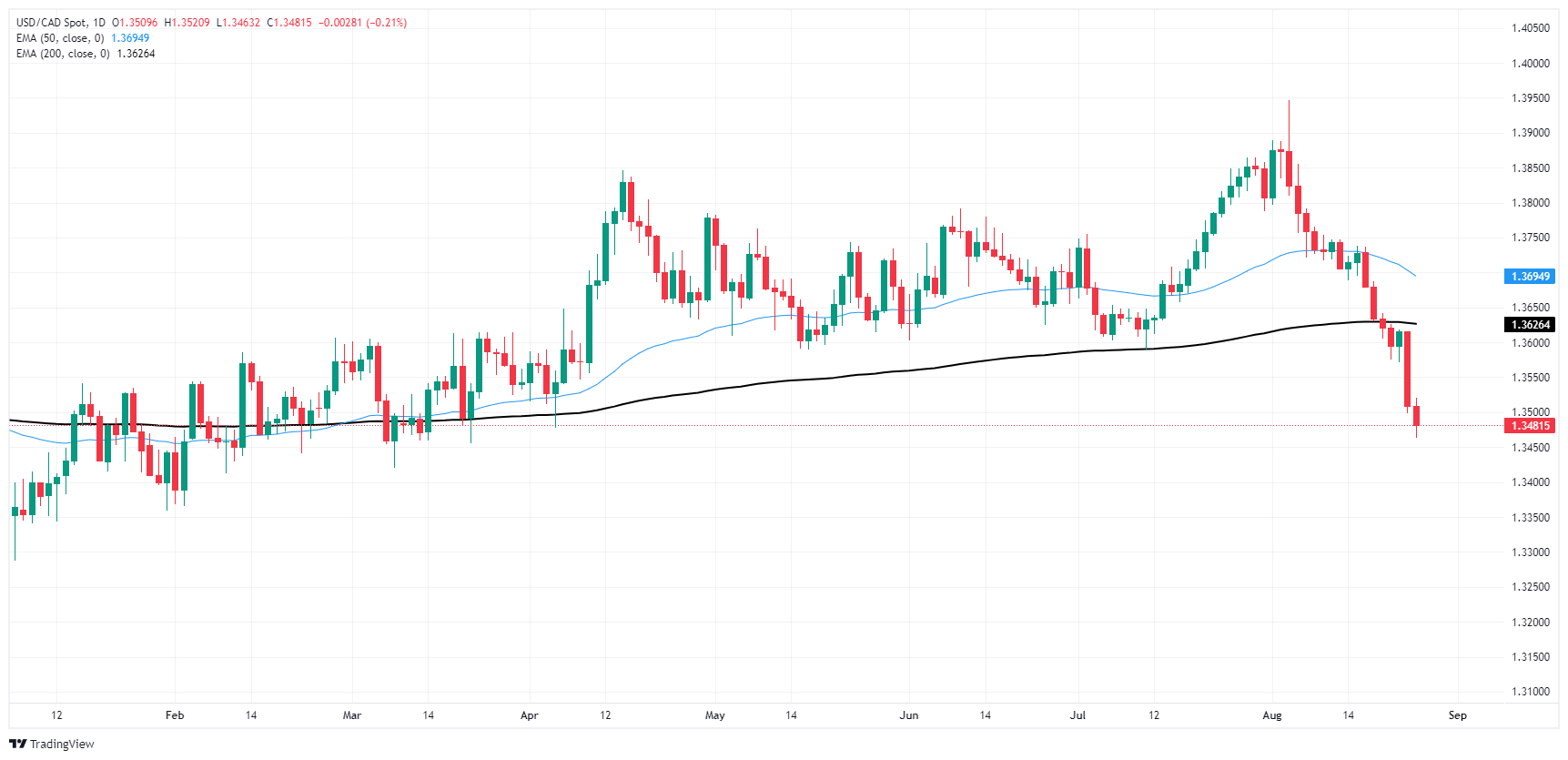เงื่อนไขและค่าสเปรดที่ดีที่สุดของเรา
 เรียนรู้เพิ่มเติม
เรียนรู้เพิ่มเติม
The Canadian Dollar (CAD) is broadly higher on Monday, kicking off the new trading week with an across-the-board recovery thanks to easing bidding pressure in other categories rather than any bullish tilt within the CAD itself. The CAD rallied one quarter of one percent against the Greenback, tipping into a fresh multi-month high.
Canada remains absent from the economic calendar in any meaningful capacity until Friday. Canadian Gross Domestic Product (GDP) figures are due at the end of the week, but market flows are likely to get swamped out by a fresh print of US Personal Consumption Expenditure (PCE) inflation figures due at the same time.
The Canadian Dollar (CAD) has found a fresh bullish push against the Greenback on Monday, kicking off a fourth straight week of gains against the US Dollar. USD/CAD traded into its lowest bids since March of this year as the CAD continues to gain ground against the USD, extending a fundamentals-based tailspin down the charts even further below the 200-day Exponential Moving Average (EMA) at 1.3625.
USD/CAD has ground its way through most of early 2024’s congestion zone between 1.3600 and 1.3400. If short momentum is unable to remain on top of things, a resurgence in bidders could see the pair climb quickly back into July’s price range above 1.3600.

The key factors driving the Canadian Dollar (CAD) are the level of interest rates set by the Bank of Canada (BoC), the price of Oil, Canada’s largest export, the health of its economy, inflation and the Trade Balance, which is the difference between the value of Canada’s exports versus its imports. Other factors include market sentiment – whether investors are taking on more risky assets (risk-on) or seeking safe-havens (risk-off) – with risk-on being CAD-positive. As its largest trading partner, the health of the US economy is also a key factor influencing the Canadian Dollar.
The Bank of Canada (BoC) has a significant influence on the Canadian Dollar by setting the level of interest rates that banks can lend to one another. This influences the level of interest rates for everyone. The main goal of the BoC is to maintain inflation at 1-3% by adjusting interest rates up or down. Relatively higher interest rates tend to be positive for the CAD. The Bank of Canada can also use quantitative easing and tightening to influence credit conditions, with the former CAD-negative and the latter CAD-positive.
The price of Oil is a key factor impacting the value of the Canadian Dollar. Petroleum is Canada’s biggest export, so Oil price tends to have an immediate impact on the CAD value. Generally, if Oil price rises CAD also goes up, as aggregate demand for the currency increases. The opposite is the case if the price of Oil falls. Higher Oil prices also tend to result in a greater likelihood of a positive Trade Balance, which is also supportive of the CAD.
While inflation had always traditionally been thought of as a negative factor for a currency since it lowers the value of money, the opposite has actually been the case in modern times with the relaxation of cross-border capital controls. Higher inflation tends to lead central banks to put up interest rates which attracts more capital inflows from global investors seeking a lucrative place to keep their money. This increases demand for the local currency, which in Canada’s case is the Canadian Dollar.
Macroeconomic data releases gauge the health of the economy and can have an impact on the Canadian Dollar. Indicators such as GDP, Manufacturing and Services PMIs, employment, and consumer sentiment surveys can all influence the direction of the CAD. A strong economy is good for the Canadian Dollar. Not only does it attract more foreign investment but it may encourage the Bank of Canada to put up interest rates, leading to a stronger currency. If economic data is weak, however, the CAD is likely to fall.